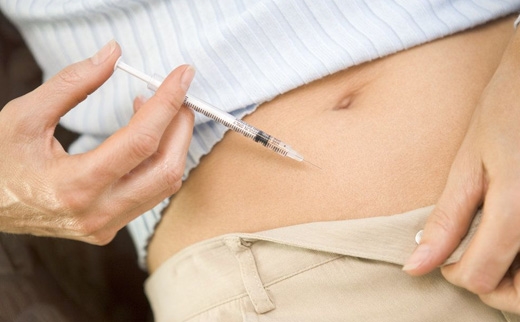
Infertility is defined as a couple's inability to become pregnant within one year of unprotected intercourse. Approximately 15 percent of couples who are trying to conceive are infertile. Before any infertility treatment begins, a woman and her partner should undergo an evaluation to determine the best course of treatment. This evaluation may include a complete history and physical examination, a semen analysis (for men),blood testing, and other tests depending upon the individual situation. IVF, or in-vitro fertilization treatment, is a highly successful method to help couples who struggle with infertility to get pregnant.
Controlling the number of growing follicles is one of the key issues of ovarian stimulation in women who do proceed to IVF treatment, because the follicle number on the day of hCG administration (ovulation trigger) is the main determinant of both pregnancy rate and risk of complications. However, there is so far no definite consensus on the most appropriate number and size of follicles to be recruited in these situations. Meanwhile, risks of ovarian hyperstimulation syndrome (OHSS) are simultaneously increased with the number of growing follicles.
GnRH Agonists and GnRH Antagonists: They work by suppressing natural hormone production (LH Hormone) to prevent ovulation from occurring prematurely. These medications are given by subcutaneous injection.
Gonadotropins: Gonadotropins are fertility medications given by injection that contain Follicle Stimulating Hormone (FSH) alone or combined with Luteinizing Hormone (LH). They are used to stimulate your ovaries to develop and mature follicles and ultimately eggs. They are usually given subcutaneously.
Progesterone: Progesterone is a hormone that is produced naturally after ovulation. Progesterone will prevent uterine lining from shedding, thus preserving developing embryo or embryos after embryo transfer. In IVF patient’s progesterone production is insufficient as ovaries are supressed by GnRH agonists or antagonists. Progesterone supplementation will be prescribed by intramuscular injection or vaginally (as a gel, suppository, or insert). Progesterone supplementation is generally begun one day after egg retrieval and recommended until the end of first trimester of pregnancy when sufficient hormonal production is produced by placenta.
Follicle stimulating hormone (FSH) alone or combined with Luteinizing hormone (LH) are given in an injection to stimulate a woman's ovaries to produce follicles, which contain an oocyte (egg).
FSH hormone stimulates the growth of an ovarian follicle in the ovary before the release of an egg from one follicle at ovulation. It also increases estradiol production. For ovulation induction therapies higher doses of FSH hormone is used to stimulate more than one follicle. As the FSH dose increase the number of growing follicles increase.
Most gonadotropin preparations used for infertility treatment are produced in a laboratory (called recombinant preparations) and some of them prepared and purified from the urine of menopausal women and must be injected under the skin to be effective.
Gonadotropins are used for ovarian stimulation in three main settings:
There are a number of protocols for the type, dosing, and timing of ovulation induction with gonadotropins. The protocol used will depend on the woman's clinical situation and her doctor's preferences.
The protocol described below is an example and may differ due to the patient’s clinical status:
Women vary considerably in their response to follicle-stimulating hormone (FSH) injections. Some women require only small doses of FSH to stimulate follicle growth. Other women require larger doses of FSH to stimulate follicle growth. The length of the time depends on the IVF protocol chosen for you and your ovarian response to these injections. Typically, patients receive injections for 8 to 10 days, but some women must continue for a few days more.
The term monitoring means close continuous observation for a patient's initial parameters and her own ovarian response to ovulation induction.
The example described below may differ due to the patient’s clinical status:
The number of antral follicles varies every month. A woman is considered to have adequate or normal ovarian reserve if the antral follicle count is 6-10 on ultrasound scan. If the count is less than 6 the ovarian reserve could be considered to be low, whereas a high reserve is greater than 12. Ovarian response to gonadotrophins (FSH, LH) mainly depends on the number of antral follicles in ovaries at the beginning of that cycle.
In IVF treatment, fertility preservation requiring egg retrieval (egg freezing),or ovulation stimulation, you will use a number of medications, many of which will be given via injection. It is useful for you to learn how to prepare these drugs yourself. We will give you specific instructions about the medication and injections and teach you also how to do your own injections. You may also ask a friend, partner or spouse to give them to you. Always use these medicines exactly as your doctor has told you.
Subcutaneous Injections
Like insulin injections the needle is very small, and it does not have to go far into the body. It is recommended that you perform the injection in the front of the thigh or into lower abdomen. Wipe the area with an alcohol wipe, take the cap off the syringe, pinch and pull the skin up on the abdomen, hold the syringe steady. Insert the needle in, pull the piston back a little and then inject the drug. If there is little bleeding, then wipe the area with alcohol and press down on the spot. The most common medications administered using subcutaneous injection are gonadotrophins, GnRH Agonists and GnRH Antagonists, human chorionic gonadotropin (hCG-trigger shot).
Intramuscular Injections
Intramuscular injections are usually given into the muscle on the upper outer part of your buttocks, near your hip. The medication is absorbed directly into the bloodstream. The needle is longer than used for subcutaneous injections. The most common medication administered using subcutaneous injection is progesterone hormone.
There are different types of injection drugs. The injection device will depend on the specific fertility drug prescribed. The first injection should be given under supervision of your doctor. Your doctor or nurse will show you how to inject before you can inject yourself.